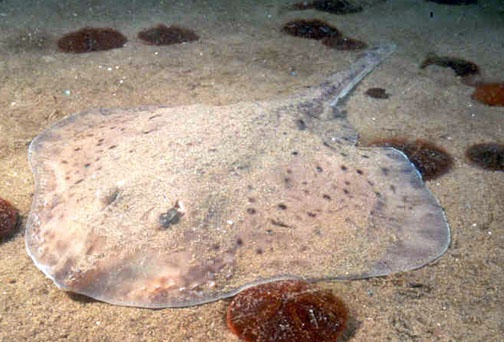Facts About Little skate
The little skate is a fascinating fish inhabiting the western Atlantic Ocean, ranging from Nova Scotia to North Carolina. It plays a significant role in the fish community of the northwestern Atlantic, even though it lacks substantial commercial value. Primarily, it is used as bait for lobster traps and occasionally for human consumption. Intriguingly, little skates are also crucial in biological and medical research.
These skates thrive on sandy or gravelly seabeds and can withstand a broad spectrum of temperatures, from a chilly 1.2°C to a warm 21°C, and salinity levels between 27 and 33.8 ppt. While they do not migrate over long distances, they do exhibit seasonal movements within their range. Morphologically, little skates are recognizable by their rounded pectoral fin disk and blunt snout. They navigate using a distinctive motion known as "punting."
Regarding their diet, little skates primarily consume decapod crustaceans, amphipods, and polychaete worms. However, they must also be cautious of predators such as sharks, teleost fishes, and seals. Little skates are oviparous, with females laying egg capsules on sandy seabeds throughout the year, typically producing 10 to 35 eggs annually.
Humans interact with little skates in various ways. They are sometimes consumed, with their wings commonly marketed as "scallops." They are used as bait in traps and frequently caught as bycatch in otter trawls. Additionally, alongside the spiny dogfish, little skates are prominent in biomedical research due to their distinctive characteristics.

 Canada
Canada